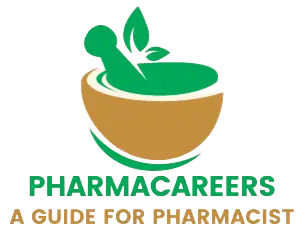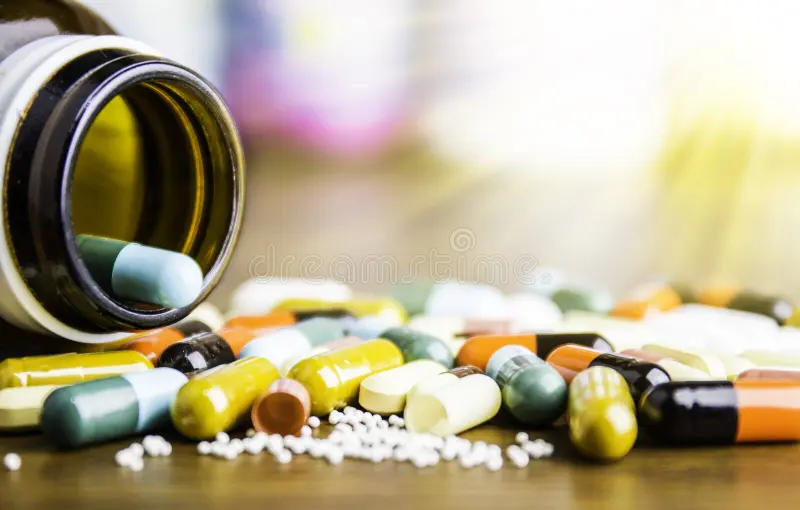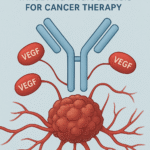Assessment of New Antibiotics
In the relentless battle against infectious diseases, antibiotics have been our stalwart defenders. However, their effectiveness is increasingly threatened by the emergence of antibiotic-resistant pathogens. As we stand at this critical juncture, the assessment of new antibiotics becomes paramount.
The Urgency of Assessment:
- Imagine a world where common infections become life-threatening due to resistance. This isn’t a dystopian scenario—it’s our reality. The assessment of new antibiotics is our lifeline against this global health crisis.
- Antibiotic resistance doesn’t discriminate—it affects both developed and developing nations. By assessing new antibiotics rigorously, we can ensure their efficacy and safety.
The Journey from Lab to Patient:
- Behind every antibiotic lies years of painstaking research and development. Scientists labor in labs, sifting through countless compounds, hoping to find the next breakthrough.
- The assessment process involves preclinical studies, clinical trials, and regulatory scrutiny. Each step is a checkpoint—a filter that separates the promising from the ineffective.
Preclinical Studies: The Crucial First Step:
- Before human trials, antibiotics undergo preclinical assessment. In vitro experiments and animal models help researchers understand their mechanisms, toxicity, and pharmacokinetics.
- These studies reveal whether a candidate has the potential to combat specific pathogens without causing harm.
Clinical Trials: The Crucible of Evidence:
- Clinical trials—the gold standard—provide evidence. Phase I, II, and III trials involve volunteers and patients. We assess safety, efficacy, and dosing regimens.
- Rigorous trial design ensures reliable results. Randomized controlled trials (RCTs) are our compass, guiding us toward effective treatments.
Parameters Matter: Efficacy, Safety, and Beyond:
- Assessment parameters include efficacy (microbiological activity), safety (side effects), pharmacokinetics (how the body handles the drug), and pharmacodynamics (dosing strategies).
- Comparative effectiveness studies pit new antibiotics against existing ones. We need winners in this battle.
Regulatory Agencies: Gatekeepers of Safety:
- The FDA, EMA, and other agencies scrutinize data. They weigh risks and benefits. Approval isn’t a rubber stamp—it’s a rigorous process.
- Post-marketing surveillance ensures ongoing safety monitoring.
Challenges and Hope:
- Challenges abound: limited patient populations for rare infections, evolving resistance, and financial constraints.
- Yet, hope shines through. Combination therapies, precision medicine, and phage therapy offer new avenues.
Discovery and Development of New Antibiotics
The Quest Begins: From Nature to Lab Bench
- Natural Sources: Historically, antibiotics were often discovered from natural sources—soil, fungi, and bacteria. Researchers scoured diverse environments for microorganisms that produced compounds with antimicrobial properties.
- Screening and Isolation: The process involved collecting samples, isolating microorganisms, and testing their secretions. Promising candidates were identified based on their ability to inhibit bacterial growth.
- Penicillin’s Serendipitous Story: The discovery of penicillin by Alexander Fleming in 1928 is legendary. He noticed that a mold (Penicillium) inhibited bacterial growth around it. This chance observation revolutionized medicine.
Laboratory Work: Turning Nature’s Clues into Medicines
- Fermentation and Cultivation: Once a promising microorganism was found, researchers scaled up its cultivation. Fermentation tanks produced larger quantities of the antibiotic.
- Chemical Modification: Some antibiotics needed structural tweaks for better efficacy or reduced toxicity. Chemists modified the natural compounds to create semisynthetic versions (e.g., amoxicillin).
- Synthetic Antibiotics: Beyond natural sources, chemists synthesized entirely new antibiotics. These lab-designed molecules expanded our arsenal.
Testing and Preclinical Assessment
- In Vitro Studies: Researchers tested antibiotics in test tubes (in vitro) against various bacteria. They measured minimum inhibitory concentrations (MICs) and assessed selectivity.
- Animal Models: Animal studies (in vivo) followed. Mice, rats, or other animals received the antibiotic to evaluate safety, efficacy, and pharmacokinetics.
- Toxicology and Pharmacokinetics: Toxicity studies ensured the antibiotic didn’t harm vital organs. Pharmacokinetics assessed absorption, distribution, metabolism, and excretion.
Clinical Trials: The Crucible of Evidence
- Phase I: Small groups of healthy volunteers received the antibiotic. Safety and dosage were studied.
- Phase II: Patients with the target infection participated. Efficacy and safety were closely monitored.
- Phase III: Large-scale trials confirmed effectiveness, compared to existing treatments. Randomized controlled trials (RCTs) provided robust data.
Regulatory Approval and Post-Marketing Surveillance
- Regulatory Agencies: The FDA (U.S.), EMA (Europe), and other agencies reviewed data. They assessed risks, benefits, and quality.
- Approval Process: If deemed safe and effective, the antibiotic received marketing approval.
- Post-Marketing Surveillance: Even after approval, surveillance continued. Adverse effects, resistance patterns, and long-term safety were monitored.
Challenges and Innovations
- Resistance: Bacteria evolve, rendering antibiotics ineffective. Researchers seek novel targets and combination therapies.
- Financial Hurdles: Developing antibiotics isn’t lucrative. Public-private partnerships and incentives are crucial.
- Phage Therapy and Precision Medicine: Alternatives like phage therapy (using viruses to target bacteria) and personalized antibiotic selection offer hope.
Preclinical Assessment of New Antibiotics
In Vitro Studies: Before testing in humans, researchers conduct in vitro experiments. These take place in test tubes or petri dishes.
Methods:
- Minimum Inhibitory Concentration (MIC): Scientists determine the lowest concentration of the antibiotic needed to inhibit bacterial growth. A lower MIC indicates greater potency.
- Time-Kill Curves: Researchers expose bacteria to varying antibiotic concentrations over time. This helps assess bactericidal (killing) or bacteriostatic (growth inhibition) effects.
- Synergy Testing: Some antibiotics work better together. Researchers test combinations to identify synergistic effects.
Outcome: In vitro data guide decisions on which antibiotics to advance to animal studies.
Animal Models (In Vivo Studies): Animal studies bridge the gap between lab experiments and human trials.
Types of Models:
- Mouse Models: Commonly used due to genetic similarities to humans.
- Rat Models: Useful for pharmacokinetic studies.
- Other Species: Dogs, rabbits, and non-human primates.
Endpoints:
- Efficacy: Researchers infect animals with specific pathogens and treat them with the antibiotic. They measure bacterial load reduction or survival rates.
- Safety: Animals are monitored for adverse effects.
- Pharmacokinetics: How the antibiotic behaves in the body (absorption, distribution, metabolism, excretion).
- Challenges: Animals don’t perfectly mimic human responses, but they provide valuable insights.
Toxicology Studies:
- Purpose: Assess the antibiotic’s safety profile.
- Design: Animals (usually rodents) receive escalating doses of the antibiotic. Researchers monitor for adverse effects on organs (liver, kidneys, etc.).
- Endpoints: LD50 (lethal dose for 50% of animals) and NOAEL (no observed adverse effect level) are determined.
- Risk-Benefit Balance: Researchers weigh potential toxicity against the antibiotic’s therapeutic benefits.
Pharmacokinetics (PK) and Pharmacodynamics (PD):
PK Studies:
- Absorption: How well the antibiotic is absorbed after administration (oral, intravenous, etc.).
- Distribution: How it spreads throughout the body.
- Metabolism: How the body processes the antibiotic.
- Excretion: Elimination from the body.
PD Studies:
- Dosing Regimens: Researchers optimize dosing schedules.
- Resistance Development: Assess how quickly resistance emerges.
- Time Above MIC: Maintaining effective drug levels.
- AUC/MIC Ratio: Area under the concentration-time curve relative to MIC.
Goal: Achieve optimal PK/PD parameters for clinical success.
Why Preclinical Assessment Matters:
- Safety Assurance: Identifying toxic effects early prevents harm to patients.
- Efficacy Prediction: In vitro and animal data guide decisions on advancing to human trials.
- Dose Selection: PK/PD studies inform dosing regimens.
- Ethical Imperative: Rigorous preclinical assessment ensures responsible research.
Clinical Trials
Purpose and Phases: Clinical trials determine whether an antibiotic works as intended and whether it’s safe for human use.
Phases:
- Phase I: Small-scale trials with healthy volunteers. Focus on safety, dosage, and pharmacokinetics.
- Phase II: Involves patients with the target infection. Assess both safety and efficacy.
- Phase III: Large-scale trials. Rigorous testing of effectiveness, often compared to existing treatments.
Trial Design:
- Randomization: Participants are randomly assigned to treatment groups (antibiotic vs. placebo or standard treatment).
- Blinding: Single-blind (participants unaware) or double-blind (both participants and researchers unaware).
- Endpoints: Define success—e.g., clinical cure rates, reduction in bacterial load, or prevention of recurrence.
Recruitment and Informed Consent:
- Ethical Imperative: Participants must give informed consent. They’re informed about risks, benefits, and their rights.
- Patient Diversity: Trials include diverse populations (age, gender, ethnicity) to ensure broad applicability.
Efficacy Assessment:
- Primary Endpoint: The main outcome measured (e.g., cure rate).
- Secondary Endpoints: Additional outcomes (e.g., quality of life, time to resolution).
- Statistical Analysis: Data crunching to determine significance.
Safety Monitoring:
- Adverse Events: Researchers track side effects, allergies, and unexpected reactions.
- Data Safety Monitoring Boards (DSMB): Independent experts review safety data during the trial.
Pharmacokinetics and Pharmacodynamics (PK/PD):
- PK Studies: How the body handles the antibiotic (absorption, distribution, metabolism, excretion).
- PD Studies: Optimal dosing regimens to maximize effectiveness.
Challenges and Triumphs:
- Patient Compliance: Ensuring participants take the antibiotic correctly.
- Placebo Effect: Placebos can influence outcomes.
- Real-World Relevance: Trials mimic controlled conditions; real-world use may differ.
Regulatory Approval:
- New Drug Application (NDA): Companies submit comprehensive data to regulatory agencies.
- Risk-Benefit Assessment: Agencies weigh risks (side effects) against benefits (effectiveness).
Why Clinical Trials Matter:
- Evidence-Based Medicine: Trials provide evidence for treatment decisions.
- Patient Safety: Rigorous testing prevents harm.
- Advancing Science: Each trial contributes to medical knowledge.
Assessment Parameters
Efficacy:
- Microbiological Activity: How well does the antibiotic inhibit the growth or kill the target bacteria? Researchers assess this through in vitro experiments (like minimum inhibitory concentration, or MIC).
- Clinical Cure Rates: In clinical trials, we measure the proportion of patients who achieve complete resolution of their infection after receiving the antibiotic.
- Time to Response: How quickly does the antibiotic start working?
Safety:
- Adverse Effects: Researchers closely monitor adverse events reported by patients during clinical trials. Common side effects, allergic reactions, and any unexpected issues fall under this category.
- Toxicity: Preclinical toxicology studies (usually in animals) assess whether the antibiotic harms vital organs or tissues.
- Drug Interactions: Does the antibiotic interact with other medications? Clinicians need to be aware of potential interactions.
Pharmacokinetics (PK):
- Absorption: How well does the body absorb the antibiotic after administration (e.g., oral, intravenous)?
- Distribution: How does the antibiotic spread throughout the body? Does it reach the site of infection effectively?
- Metabolism and Excretion: How is the antibiotic processed and eliminated?
Pharmacodynamics (PD):
- Dosing Strategies: Researchers study the optimal dosing regimen. Should the antibiotic be given once a day or multiple times?
- Time Above MIC: Maintaining drug levels above the minimum inhibitory concentration (MIC) ensures efficacy.
- AUC/MIC Ratio: The area under the concentration-time curve relative to MIC—important for certain antibiotics.
Comparative Effectiveness:
- Against Existing Antibiotics: How does the new antibiotic compare to established treatments? Is it superior in terms of efficacy or safety?
- Head-to-Head Trials: Clinical trials often include comparative arms to directly compare different antibiotics.
Resistance Potential:
- Emergence of Resistance: Researchers assess how quickly bacteria develop resistance to the antibiotic.
- Resistance Mechanisms: Understanding how resistance occurs helps guide clinical use.
Patient Populations:
- Special Populations: Some antibiotics may be more effective or riskier in specific groups (e.g., children, elderly, pregnant individuals).
- Renal or Hepatic Impairment: Dosing adjustments are necessary for patients with impaired kidney or liver function.
Overall Benefit-Risk Assessment:
- Regulatory agencies (like the FDA or EMA) weigh all these parameters to determine whether the antibiotic should be approved for clinical use.
- Balancing efficacy against safety is crucial.
Regulatory Approval
Why It Matters:
- Patient Safety: Regulatory approval ensures that an antibiotic has undergone rigorous evaluation before it hits pharmacy shelves. We don’t want any “Oops, our bad!” moments.
- Balancing Act: Regulatory agencies (like the FDA in the U.S. or the EMA in Europe) weigh the benefits (effectiveness against infections) against the risks (potential adverse effects).
- Public Health Impact: Antibiotics affect everyone. Their responsible use is critical to combatting resistance.
New Drug Application (NDA):
Submission: After successful clinical trials (Phase III), pharmaceutical companies compile a comprehensive dossier—the NDA.
Data Included:
- Clinical Data: Detailed reports from all phases of trials.
- Preclinical Data: Toxicology studies, pharmacokinetics, and pharmacodynamics.
- Manufacturing Details: How the antibiotic is produced, quality control, and stability data.
- Labeling Information: Dosage instructions, warnings, and precautions.
FDA/EMA Review: Regulatory experts scrutinize the NDA. They may request additional information or clarifications.
Risk-Benefit Assessment:
- Efficacy: Does the antibiotic work as intended? Is it effective against the targeted infections?
- Safety: What are the potential adverse effects? How do they compare to the benefits?
- Quality: Is the manufacturing process reliable? Is the product consistent?
- Labeling: Is the information clear and accurate for healthcare providers and patients?
Approval Decision:
- Thumbs Up or Down: If satisfied, the regulatory agency grants marketing approval. The antibiotic can now be prescribed.
- Conditional Approvals: Sometimes, approval comes with conditions (e.g., further studies or restricted use).
Post-Marketing Surveillance:
- Vigilance Continues: Even after approval, monitoring doesn’t stop.
- Adverse Event Reporting: Healthcare professionals and patients report any unexpected side effects. This data helps detect rare or delayed adverse events.
- Risk Communication: Agencies communicate safety information to healthcare providers and the public.
- Label Updates: If new risks emerge, labels are updated to reflect the latest information.
- Risk Minimization Strategies: Agencies collaborate with manufacturers to minimize risks (e.g., restricted use in certain populations).
Global Harmonization:
- International Collaboration: Regulatory agencies share information and align standards.
- Mutual Recognition: If an antibiotic is approved in one country, other agencies may recognize that approval.
Challenges and Future Directions
Antibiotic Resistance:
- The Arms Race: Bacteria evolve rapidly, developing resistance mechanisms against antibiotics. Our current arsenal is losing ground.
- Limited New Classes: Discovering novel antibiotic classes is challenging. We’re not unearthing as many “penicillin moments” as we’d like.
Financial Hurdles:
- Economic Disincentives: Developing antibiotics isn’t lucrative for pharmaceutical companies. Unlike chronic medications, antibiotics are often short-term courses.
- Market Dynamics: The “use sparingly” principle clashes with profit motives.
Narrow-Spectrum vs. Broad-Spectrum:
- Balancing Act: Narrow-spectrum antibiotics target specific bacteria, reducing resistance risk. But broad-spectrum ones cover more pathogens.
- Selective Pressure: Broad-spectrum use can accelerate resistance.
Clinical Trials Complexity:
- Patient Populations: Finding enough patients for rare infections is tough.
- Placebo Challenges: Placebo-controlled trials are ethically necessary but can be tricky.
Future Directions and Exciting Possibilities:
Combination Therapies:
- Tag Team Approach: Combining antibiotics with different mechanisms of action can delay resistance.
- Synergy: Some pairs work better together than alone.
Phage Therapy:
- Viral Warriors: Bacteriophages (viruses that infect bacteria) can target specific pathogens.
- Precision Medicine: Customized phage cocktails for individual patients.
Antibiotic Stewardship:
- Smart Use: Educating healthcare providers and patients about responsible antibiotic use.
- Dose Optimization: Tailoring doses to minimize resistance.
Repurposing Existing Drugs:
- Hidden Gems: Some non-antibiotic drugs show antibacterial properties. Let’s explore!
- Drug Combinations: Pairing existing drugs creatively.
Precision Antibiotics:
- Genomic Insights: Understanding bacterial genomes helps design personalized treatments.
- CRISPR-Cas: Gene editing tools may target bacterial resistance genes.
Eco-Friendly Antibiotics:
- Less Environmental Impact: Developing antibiotics that degrade harmlessly.
- Natural Sources: Exploring marine organisms, soil, and symbiotic relationships.
Conclusion
In our quest to battle infections, new antibiotics emerge as our trusty allies. But how do we ensure they’re up to the task? Let’s break it down: Picture a world where common infections turn deadly due to antibiotic resistance. Scary, right? That’s why assessing new antibiotics is like putting on armor before a battle—it’s essential. Scientists play detective, searching for promising compounds. Then come the clinical trials—volunteers stepping up to test these antibiotics.
It’s like a superhero audition! We measure success in two ways: efficacy (can the antibiotic beat the bad guys?) and safety (no one wants side effects). Think of regulatory agencies as bouncers at the antibiotic nightclub—they decide who gets in (approval) and who stays out (not approved). We face hurdles—like bacteria evolving faster than our Netflix queue. But there’s hope: combo moves (antibiotics team up), viral allies (phage therapy), and eco-friendly solutions (antibiotics that don’t mess up the planet).
For practice MCQ on this article, click here.
For more regular updates you can visit our social media accounts,
Instagram: Follow us
Facebook: Follow us
WhatsApp: Join us
Telegram: Join us




One response to “Assessment of New Antibiotics”
[…] Assessment Of New Antibiotics » PHARMACAREERS […]